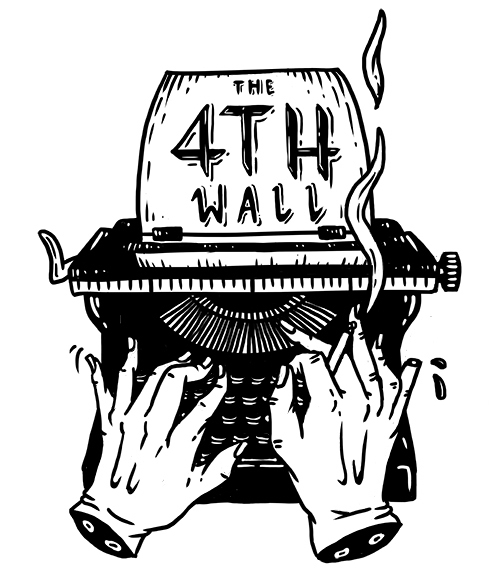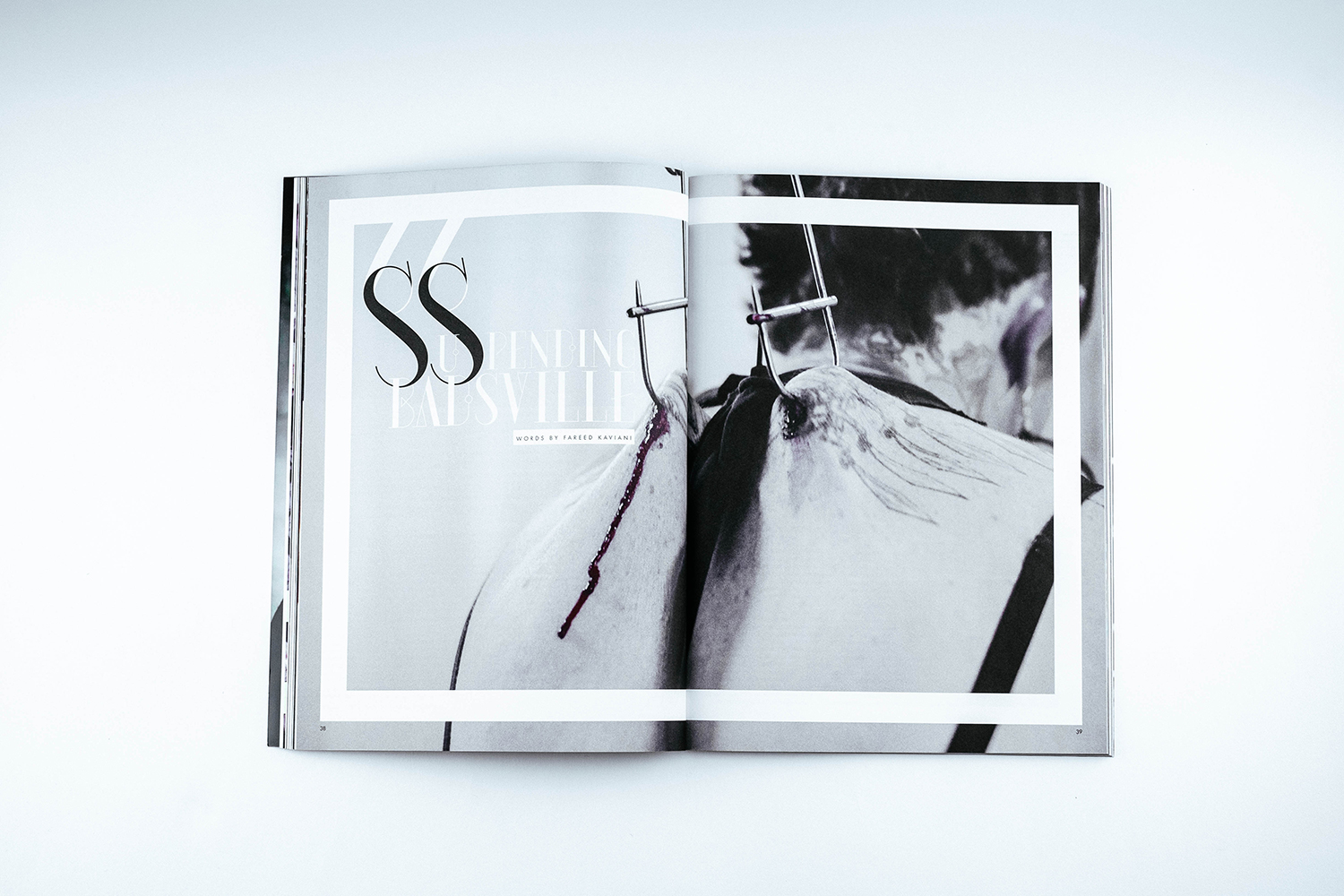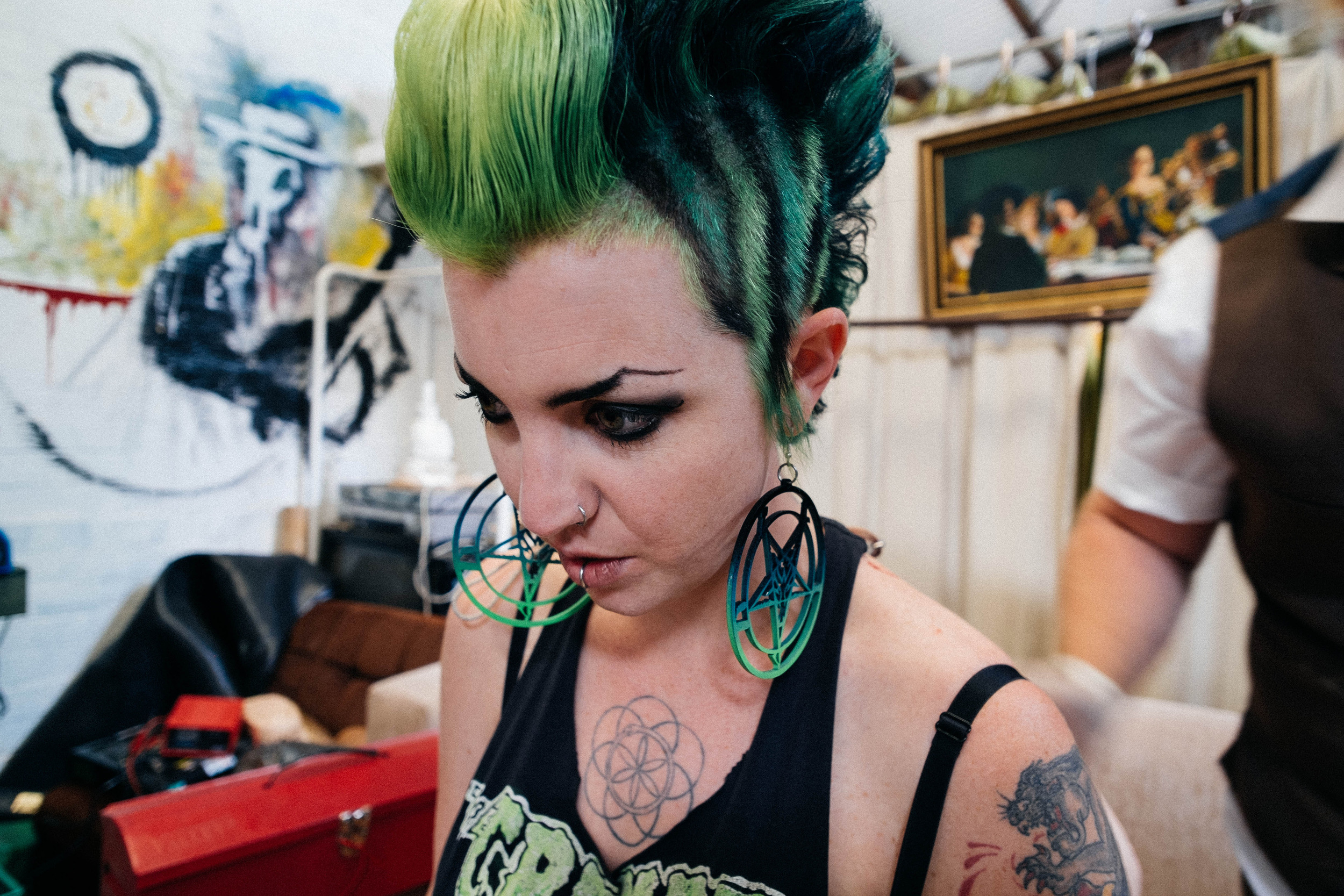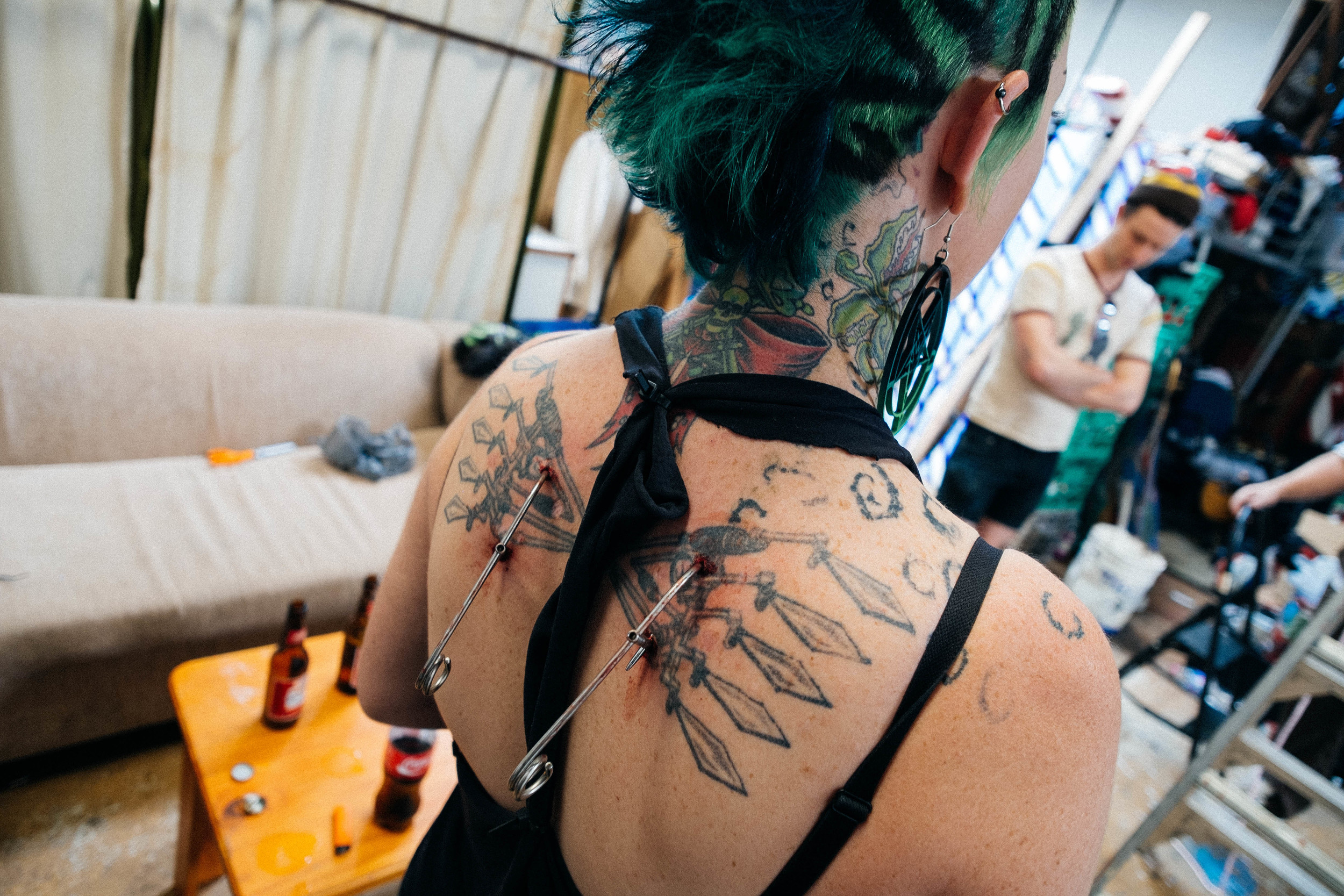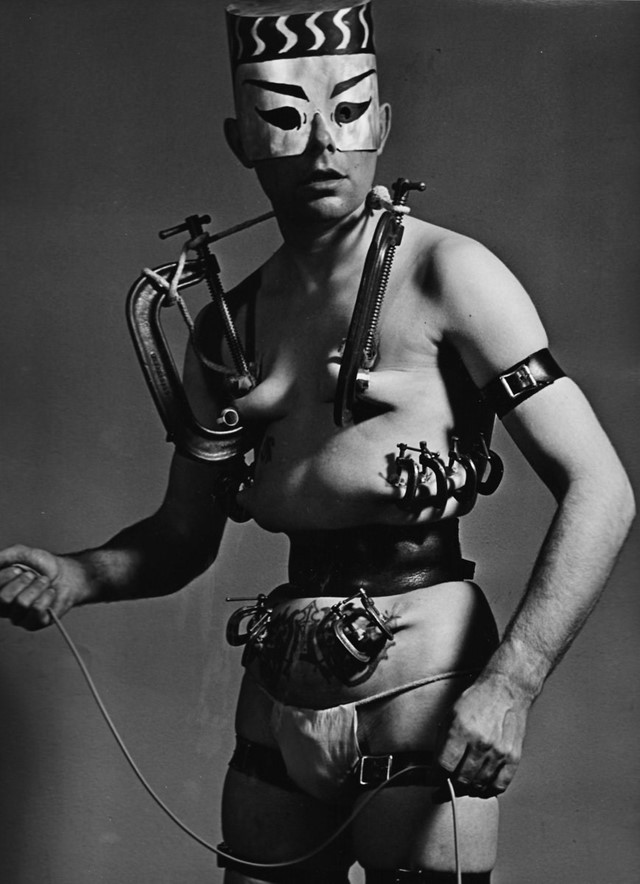Hanging with Badsville: hook, line, and body modifications
During this painful operation, most of these young men, as they took their position to be operated upon, observing me taking notes, beckoned me to look them in the face, and sat, without the apparent change of a muscle, smiling at me whilst the knife was passing through their flesh, the ripping sound of which, and the trickling of blood over their clay-covered bodies and limbs, filled my eyes with irresistible tears.
The Cutting Scene. Mandan O-kee-pa Ceremony from George Catlin's O-Kee-Pa: A Religious Ceremony; and Other Customs of the Mandans
Although hampered by a fondness for commas conventional in 19th-century academic works, George Catlin’s 1867 anthropological work O-Kee-Pa: A Religious Ceremony; and Other Customs of the Mandans provided pale faces in the ‘civilized’ world with their first images of body suspension. The suspension itself was just one event in the elaborate religious ceremony. With the lifelessness of corpses, young men were suspended for fifteen to twenty minutes until they fainted, whereupon they were lowered, unhooked, and left to convalesce without any assistance. Regaining consciousness was a sign of the Great Spirit’s approval.
A hundred years on from Catlin’s ethnography, Fakir Musafar, self-described shaman, artist, master piercer and body modifier, appropriated and modernised the practice, introducing it into American subculture. This lent him the title ‘Father of the Modern Primitives’ movement, a coin he termed. For Musafer, body modification is a spiritual exercise. Hindus, for instance, have been practicing suspension for over five thousand years. As part of the Thaipusam festival, celebrated mainly by Tamils on the full moon of January, many perform a Kavadi, a type of dance emphasising debt bondage. One particular type is Paravai Kavadi: a suspension where the practitioner is hung by hooks in his back and legs from a beam, the undulating motion of which causes the suspender’s body to oscillate in a birdlike manner. In this way, the body is used as a means to transcend itself and attain a state of grace.
Today, however, Musafar guesses that a lot of people are doing suspensions ‘for sheer novelty, attention, and ego satisfaction’. In fact, he believes suspensions fall into three categories: spiritual suspensions for deep self-knowledge and inner wisdom; sports suspensions for thrills and physical/emotional challenges like bungie jumping, hang gliding, rock climbing, etc; and ego-based performance suspensions for the aforementioned self-indulgent shock-and-awe reasons. Musafar feels very strongly that if a custom is borrowed from another culture, ‘it is your obligation to respect and understand, as best possible, the significance and mystery of the practice.’ In saying that, he believes ‘everybody has a right to do what they will with their body even if it is for sheer exhibitionism.’
Gordo Gamsby (right) piercing Emily Badsville
But that's Musafar's opinion, and I wanted to understand the motivations behind a contemporary Melbourne suspension.
Cue Emily Badsville, she first got into body modification at the age of sixteen, practiced her first suspension at nineteen, and started a sideshow circus troupe in Perth a couple of years after that.
'We did the usual freakshow/sideshow stuff, like human blockhead, bed of nails, brain flossing, etc., and incorporated self-piercing and flesh pulling/suspension into our acts. I left Perth a few years later and performed on and off again in Sydney. Then I moved to Montreal, where I started a suspension duo with my performance partner, Natasha Nebula, (we were called Bella Obscura), which was a bit more fetish orientated but incorporated her dance and fire training with my sideshow antics.'
Badsville’s impetus depends on the suspension.
'If I am performing, it’s obviously exhibitionist. If it’s private, usually I’ll be seeking some sort of emotional or mental release. I usually do what's called a ‘suicide’ suspension: two hooks in the upper back. I find this the easiest to perform as it gives me free movement of my arms and legs, because I love swinging and spinning around. I’ve also done a ‘lotus’, which is where you’re lifted in a seated lotus position [legs crossed] with two hooks in your back and one in each knee and ankle. For performances I’ve had hooks through my forearms for hanging weights from, and [hooks in my] lower back for lifting others and flesh-pull tug-of-wars!'
There are many other suspension styles, such as chest, coma, knee, crucifix, resurrection, and superman, however, Badsville avoids doing some of them in light of the likelihood of skin ripping:
'Things like two-point knees, single-point anywhere, etc. [The number of points is a reference to the number of hooks.] I’m just not interested, as I like to thrash about on the hooks a lot. So I go for dependable suspensions mostly, where there is a lot of movement available and less risk in terms of ripping.'
The most essential element for her is mental preparation:
'Getting your mind ready to deal with the thoughts of self-doubt by taking a minute to control your breathing. It’s pretty easy to hyperventilate, which affects your mental state and body’s responses when you’re suspending. I usually grab some form of sugar prior to it, which just gives me the energy reserves I need.'
Mental preperation
In each case these young men submitted to the knife, to the insertion of the splints, and even to being hung and lifted up, without a perceptible murmur or a groan; but when the turning commenced, they began crying in the most heartrending tones to the Great Spirit, imploring him to enable them to bear and survive the painful ordeal they were entering on. This piteous prayer, the sounds of which no imagination can ever reach and of which I could get no translation, seemed to be an established form, ejaculated alike by all, and continued until fainting commenced, when it gradually ceased.
While enduring a veritable stabbing of the back with fishhooks, Badsville (on both occasions in which she suspended in my presence) remained faithful to the silence of the Mandan initiates. In contrast to the practioners of old, however, she also while undergoing the suspension itself refrained from any kind of audible ejaculation or ritualized anguished chanting.
Hooked and ready to be suspended
I later asked her to provide me with a retrospective stream of consciousness.
'When you’re getting them pierced, it feels pretty brutal. So you can understand the heightened response your body and mind are having to the pain. This automatically triggers a reaction within your brain, and it compensates by flooding your body with adrenaline and all kinds of delicious endorphins. At this point I’m very happy, welcoming the old feeling of this incredible buzz within my system, and after a couple of smokes and some sugar, I’m raring to go up!'
Sugar and a smoke prep
'When I’m rigged up and about to go up in the air, I’m trying to steady my mind and make some promises to trust myself and my body to do this. Your mind is trying to convince you at this point to get out of danger. To quit doing what you’re doing and run far away. Very much like being in fight-or-flight mode. I don’t get this feeling much anymore because of performing suspensions for years, but from somewhere deep inside there’s still that little voice saying ‘No! Maybe it won’t go so well this time!’ And it’s good to fight against that little voice, because it increases the buzz and because it’s vital to the act of suspension—you need your body’s natural painkillers!'
Rigged
'Once you’ve achieved the steel resolve to get off the ground and up in the air, it’s just fucking fun! It doesn’t hurt much anymore as far as I’m concerned, because you’ve pretty much supported your body weight on whatever points you’ve chosen to suspend from, so it’s like the pain receptors aren’t even registering it anymore. There’s nothing like feeling like you’re flying, dancing in the sky: moving around up there feels amazing. I get a feeling of absolute clarity and my senses are heightened.'
Suspended
Suspended
Each body lowered to the ground appeared like a loathsome and lifeless corpse. No one was allowed to offer them aid whilst they lay in this condition. They were here enjoying their inestimable privilege of voluntarily entrusting their lives to the keeping of the Great Spirit, and chose to remain there until the Great Spirit gave them strength to get up and walk away.
'Pain is great,' Emily tells me. 'Pain reminds us that we are alive. But pain is also just a part in the entire act of suspension. It’s a challenge to overcome in order to get to the good stuff that follows.'
Emily Badsville currently works as a solo fetish and piercing performer.
Rigger & piercer, Gordo Gamsby. Photos by Fareed Kaviani.
